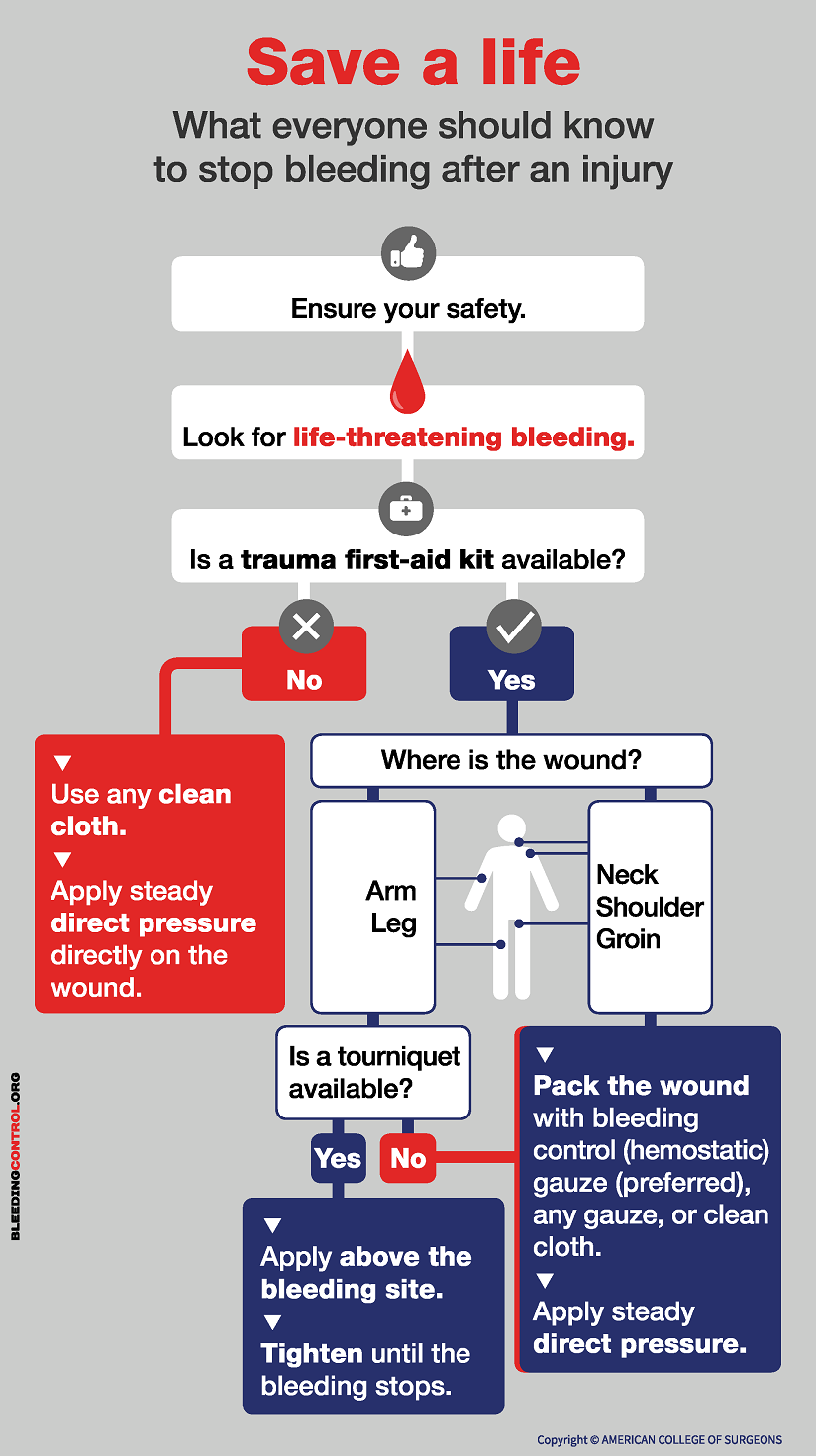
Are you prepared in a bleeding emergency?
Posted: April 25, 2025May is National Stop The Bleed Month. May 23 is National Stop the Bleed Day, an awareness campaign intended to encourage bystanders to become trained, equipped and empowered to help in a bleeding emergency before professional help arrives.
Stop the Bleed was started in 2015, after the Sandy Hook Elementary School tragedy. “Hemorrhage control” or bleeding control was one of the most important factors in saving lives that day. Whether at home or out in public, knowing how to control bleeding can make a life-or-death difference when the need arises. “Every day, we are showing how STOP THE BLEED® can save lives across the globe.
Le Bonheur’s Trauma Services team offers group training on bleeding control. For more information or to schedule a training for your group (work, church, school, etc.), contact John Wright at 287-5326 (work) or email at john.wright@lebonheur.org.
Here are the basics of bleeding control:
- Assure your safety.
- Look for life-threatening bleeding.
- Is there a trauma first aid kit available?
- If NO: 1) Use any clean cloth; 2) Apply steady direct pressure directly on the wound.
- If YES: Determine where the wound is.
- If it’s on the arm or leg, check for a tourniquet. If there is a tourniquet available, apply it above the bleeding site. Tighten until the bleeding stops. If there is no tourniquet available, pack the wound with bleeding control gauze or a clean cloth, and apply steady direct pressure.
- If the wound is on the neck, shoulder or groin, pack the wound with bleeding control gauze or a clean cloth, and apply steady direct pressure.




